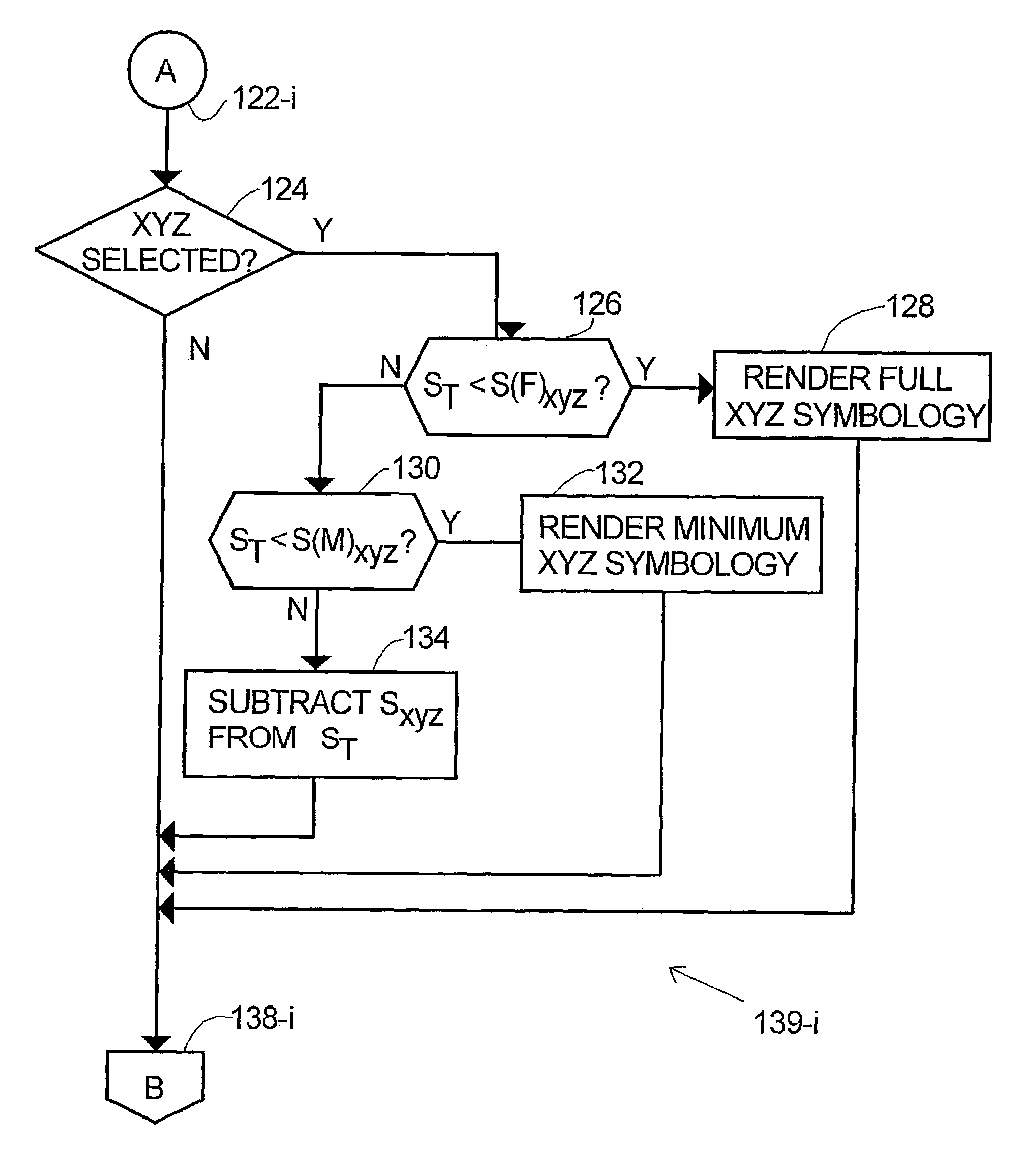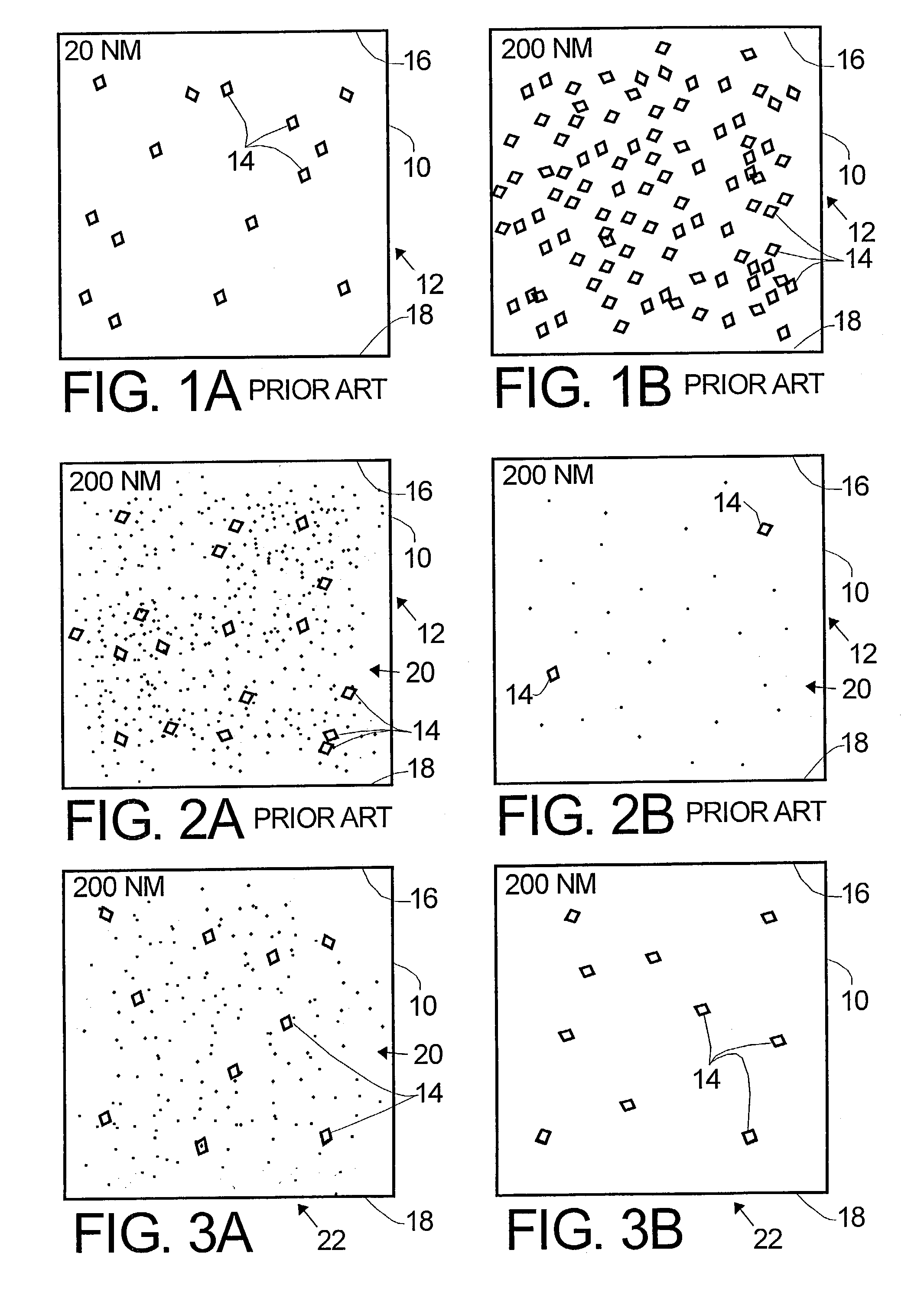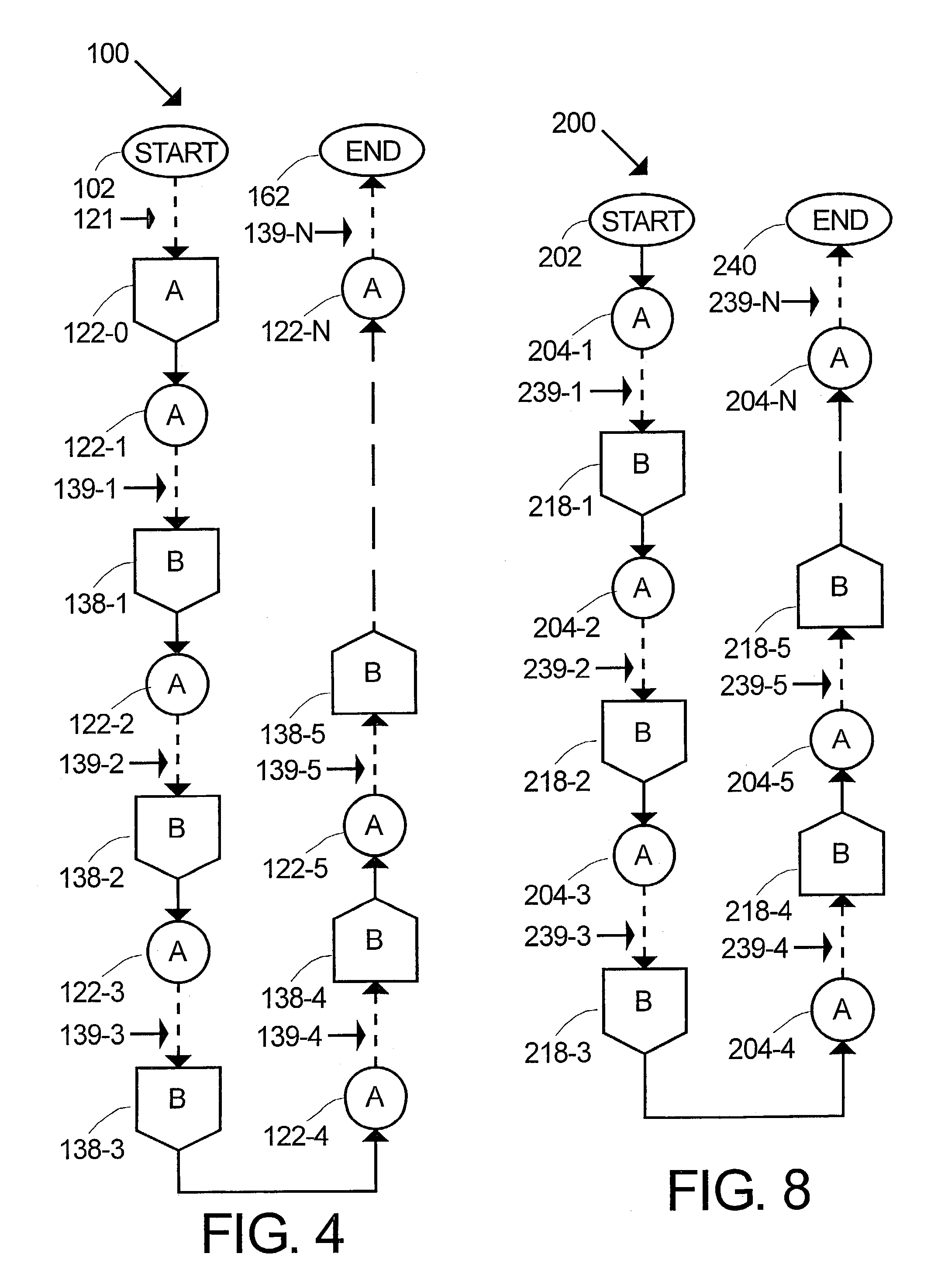Electronic map display declutter
a technology of electronic map and display, applied in the direction of instruments, surveying and navigation, navigation instruments, etc., can solve the problems of losing individual significance, not having the size or resolution of most paper charts, and becoming much less effectiv
- Summary
- Abstract
- Description
- Claims
- Application Information
AI Technical Summary
Benefits of technology
Problems solved by technology
Method used
Image
Examples
first embodiment
[0029]FIG. 4 illustrates the method of the present invention wherein the total available symbol count ST is determined for the symbol types that have been selected by the user and then ST is used to declutter the display. FIG. 4 is a global overview of the method of the present invention using the total available symbol count ST. Beginning at START 102, process 100 first executes sub-process 121 described in FIG. 5 and then executes sequentially sub-processes 139-i, e.g., 139-1, 139-2, 139-3 . . . 139-N, where N is the total number of map symbol types (e.g., VOR, NDB, ILS, APT, etc.) desired to be displayed. Sub-process 139-i is described in FIG. 6. When the last occurrence 139-N of sub-process 139-i has run, method 100 terminates at END 162
[0030]Referring now to FIG. 5, following START 102, in step 104 the symbol count ST is set to zero, i.e., ST=0. In successive query steps 106, 110, 114, 118 it is determined whether a particular symbol type, e.g., VOR, NDB, ILS, APT, etc. has bee...
second embodiment
[0039]FIG. 8 is a simplified flow chart similar to FIG. 4, but of decluttering method 200 according to the present invention. Method 200 carries out decluttering based on the number of symbols of each type rather than on the total number of symbols of all types. Following START 202, method 200 executes sub-processes 239-i (see FIG. 9) for i=1 to N, in a way analogous to sub-process 139-i in FIG. 4. Sub-processes 239-i correspond to each symbol type desired to be displayed. Sub-process 239-i, analogous to sub-process 139-i of FIG. 6, is shown in FIG. 9 and sub-process 239′ analogous to sub-process 139′ in FIG. 7 is shown in FIG. 10. When last sub-process 239-N (or 239′-N) is completed then method 200 is complete at END 240 where the symbols of each type to be presented FULL or MINIMUM are known. The value of N depends upon the number of symbol types selected for display by the user and correspondingly fewer or more sub-processes 239-i are included in method 200 as required.
[0040]FIG....
PUM
 Login to View More
Login to View More Abstract
Description
Claims
Application Information
 Login to View More
Login to View More - R&D
- Intellectual Property
- Life Sciences
- Materials
- Tech Scout
- Unparalleled Data Quality
- Higher Quality Content
- 60% Fewer Hallucinations
Browse by: Latest US Patents, China's latest patents, Technical Efficacy Thesaurus, Application Domain, Technology Topic, Popular Technical Reports.
© 2025 PatSnap. All rights reserved.Legal|Privacy policy|Modern Slavery Act Transparency Statement|Sitemap|About US| Contact US: help@patsnap.com



